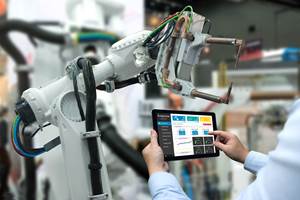CNC Machining: Haven’t We Run This Job Before?
Replicating successfull setups should help eliminate common snags that derail repeat jobs.
I think every CNC manager has uttered the question in the title of this column at one time or another, usually when a recurring job hits a snag during setup. There is a common misconception that just because a job has been successfully completed before, it will run flawlessly in the future.
In all cases, the reason why the job hit a snag is simple: Something has changed since the last time it was properly run. But figuring out what has changed and determining how to fix it may not be so simple. It can even involve repeating steps taken to correct a problem in the past. Here are some obvious examples of and reasons for snags:
• A needed cutting tool or workholding component has gone missing. Misplaced or broken components may not have been replaced since the last time the job was run.
• The CNC program won’t run without generating alarms. A corrected version of the program was not saved after the job was verified, meaning the original program must be verified again from scratch.
• Cutting conditions are causing chatter. Variations in raw material, such as hardness, may be affecting the machining operations. Or maybe the components used to assemble the cutting tools are not the same as they were the previous run(s).
• The setup person cannot get a workpiece to pass inspection. A different, less skilled setup person may be setting up the job this time.
With appropriate documentation, the physical tasks required for a successful setup should be pretty easy to replicate for each repeated job. Information about the workholding setup must be developed and relayed to the setup person, as well as specifics on program zero assignment; cutting tool assembly; measurement; loading and offset entry; loading of the appropriate CNC program; and just about anything else that must be done before the CNC program can be run.
The first objective for eliminating inconsistencies must be to ensure that physical tasks are completed in exactly the same manner every time. Having setup-related information documented promotes consistency, eliminates guesswork and keeps setup people from having to remember critical information from one time the job is run to the next. Additionally, the time required to perform physical tasks for a given setup will be consistent as well.
It is not unusual, however, for a setup person to encounter time-consuming problems even after he completes the physical tasks. He must still run a workpiece and get it to pass inspection before he (or anyone else) can run production. This can pose challenges even for jobs that have been run many times before, especially when small tolerances must be held for workpiece attributes. The smaller the tolerances, the more unlikely that initial offset settings will be good enough to allow machined surfaces to fall within their tolerance bands.
Special consideration must be given to initial offset settings for cutting tools that machine the most critical surfaces. If left unchecked, it is probable that the first workpiece will fail inspection. Adjustments must then be made and another workpiece must be run. The more complex the workpiece, the more difficult it will be to correctly adjust. If mistakes are made, the process must be repeated. Given this scenario of running the first workpiece without considering initial offset settings, it is not uncommon for a job to remain in setup, waiting for an acceptable workpiece, long after all of the physical setup tasks have been completed.
To deal with the related inconsistencies, make it as easy as possible for setup people to trial machine when there are small tolerances to be held. Trial machining involves first modifying the cutting tool’s initial offset setting in such a way that additional material is left on the critical surface. The setup person should then stop the program once the cutting tool has machined, measure the critical surface and readjust the cutting tool’s offset to make it machine the surface to its target value. Finally, the operator should rerun the cutting tool. This time, the machined surface will be within its tolerance band and very close to its target value.
At the very least, you should ensure the ability to rerun cutting tools. This often means including some redundant programming words at the beginning of each tool that make the cutting tool independent of the rest of the program and an optional stop word (M01) at the end of the tool so that the machine can be easily stopped by turning on the optional stop operator’s panel function.
Trial machining requires skill, but you can simplify the task by programming the operation. Using the optional block skip function (also called block delete), you can isolate those commands related to trial machining, keeping them from being executed during normal production. During setup, the setup person can simply turn off the optional block skip operator’s panel function. The program will execute the trial machining commands, making it easier to get critical cutting tools to machine properly. The setup person will turn on the optional block skip function once an acceptable workpiece has been run so trial machining commands will be ignored during the production run.
Related Content
Finally, A Comprehensive Software Solution Designed for Small Job Shops
Zel X from Siemens is an integrated software application that consolidates collaboration, design, manufacturing, and operations into a comprehensive, easy-to-use solution. From RFQ to delivery, it’s a more efficient way to handle quotes, manage jobs, make parts, and collaborate with teams of all sizes.
Read MoreCan Connecting ERP to Machine Tool Monitoring Address the Workforce Challenge?
It can if RFID tags are added. Here is how this startup sees a local Internet of Things aiding CNC machine shops.
Read MoreHow to Grow the Business with Real-Time Job Status Data
ERP systems that focus on making data more accessible can improve communication within a shop, reducing wasteful errors and improving capacity.
Read MoreIMTS Takeaways From the Modern Machine Shop Editorial Team
The first in-person IMTS in four years left the MMS editorial staff with a lot to digest. Here are a few of our takeaways from the show floor.
Read MoreRead Next
Obscure CNC Features That Can Help (or Hurt) You
You cannot begin to take advantage of an available feature if you do not know it exists. Conversely, you will not know how to avoid CNC features that may be detrimental to your process.
Read More3 Mistakes That Cause CNC Programs to Fail
Despite enhancements to manufacturing technology, there are still issues today that can cause programs to fail. These failures can cause lost time, scrapped parts, damaged machines and even injured operators.
Read MoreThe Cut Scene: The Finer Details of Large-Format Machining
Small details and features can have an outsized impact on large parts, such as Barbco’s collapsible utility drill head.
Read More
.jpg;width=70;height=70;mode=crop)













.png;maxWidth=300;quality=90)











